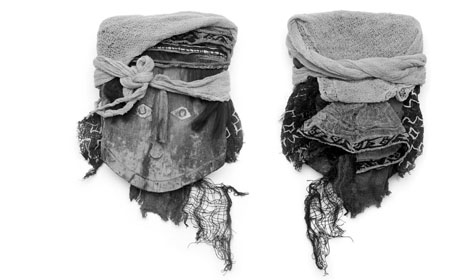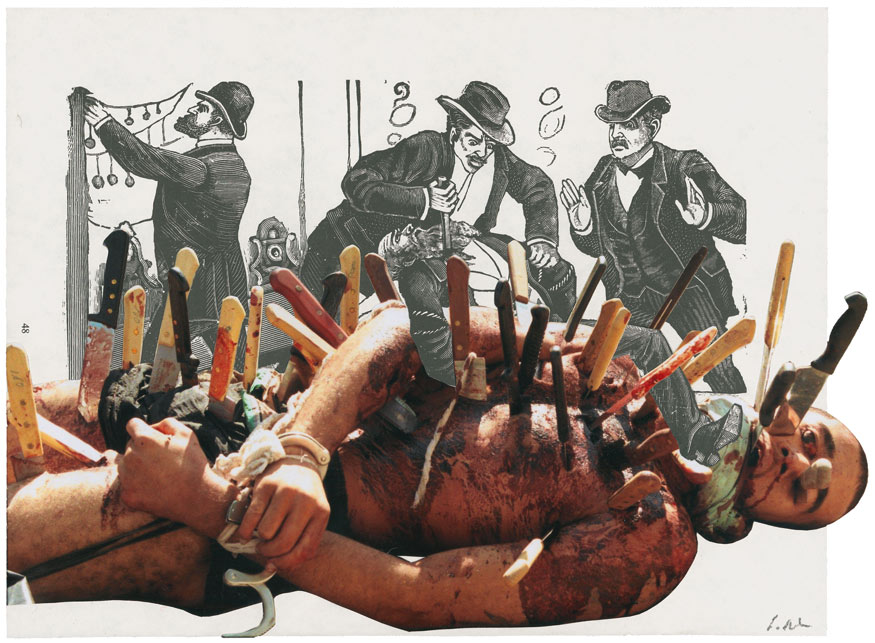Skins | “Possibly in no other place in the world is there so much variety in com- plexion and physiognomy as in Lima. From the delicately fair Creole daughter of European parents, to the jet black Congo Negro, people of every gradation of colour are seen living in intimate relation one with another…The designation Creole properly belongs to all the natives of America born of parents who have emigrated from the Old World, be those parents Europeans or Africans. There are, therefore, white as well as black Creoles…” wrote Johann Jacob von Tschudi in Travels in Peru, During the Years 1838—1842, and he gives us this list of varieties of half-castes: Parents Children White father and Negro Mother Mulatto White father and Indian mother Mestizo Indian father and Negro mother Chino White father and Mulatto mother Cuarteron White father and Mestizo mother Creole (only distinguished from the White by a palish brown complexion) White father and China mother Chino-Blanco White father and Cuarteron mother Quintero White father and Quintera mother White Negro father and Mulatta mother Zambo-Negro Negro father and Mestiza mother Mulatto-Oscuro Negro father and China mother Zambo-Chino Negro father and Zamba mother Zambo-Negro (perfectly black) Negro father and Cuarterona or Quinterona mother Mulatto (rather dark) Indian father and Mulatta mother Chino-Oscuro Indian father and Mestiza mother Mestizo-Claro (frequently very beautiful) Indian father and China mother Chino-Cholo Indian father and Zamba mother Zambo-Claro Indian father and China-Chola mother Indian (with short frizzy hair) Indian father and Cuarterona or Quinterona mother Mestizo (rather brown) Mulatto father and Zamba mother Zambo (a miserable race) Mulatto father and Mestiza mother Chino (of rather clear complexion)
1680 | The Navajo Indians believe that Spider Man made the loom, and the skill of weaving was taught by Spider Woman. However the law of Unintended Consequences may also have been at work arising from Spanish religious intolerance, and a taste for violent repression of the Pueblo people of what is now New Mexico. This caused some of them to seek refuge with the Navajo previously seen by them as enemy raiders, and the evidence is that it was these refugees who either taught weaving to the Navajo, or at the least brought new elements to what became a very highly regarded weaving tradition. Its fi nest quality serapes are described as equalling “the delicacy and sophistication of any pre-mechanical loom-woven textile.“ Some Navajo legends in fact describe Spider Woman as a Pueblo woman, and in acknowledgement their weavers left a hole in the centre of each blanket like that of a Spider’s web, until early 20th century traders refused to buy them like this. The Spanish repression of the Pueblo people at a time of famine and disease began with Franciscan missionaries forbidding Kachina dances in which masks were worn representing the polymorphous Kachina spirit. They had orders to seize every mask, prayer stick and effi gy and burn them. This caused the fi rst wave of Pueblo émigrés in 1675 when four medicine men were arrested and three executed. Some were later released, amongst them Popé who is credited with organizing the successful uprising of 1680, the secret timing of which was coordinated by the use of knotted cords. A second rebellion in 1696 led to a prolonged and brutal repression organized by Diego de Vargas appointed as Spanish Governor for this very purpose. This caused a bigger wave of Pueblo seeking refuge with the Navajo.
In the years since the introduction of the North America Free Trade Agreement, drug-related killings have increased steadily. Since the 2006 start of President Calderon’s ‘War on Drugs’ the numbers have exploded. 45,000 since that date involving gangs, the army, and a variety of special squads. In the city of Juarez alone there were 3000 such killings in the year 2010. These figures are far higher than those in the occupation of Afghanistan. Violence is normalized so that the murders have become increasingly gruesome and theatrical in style.


